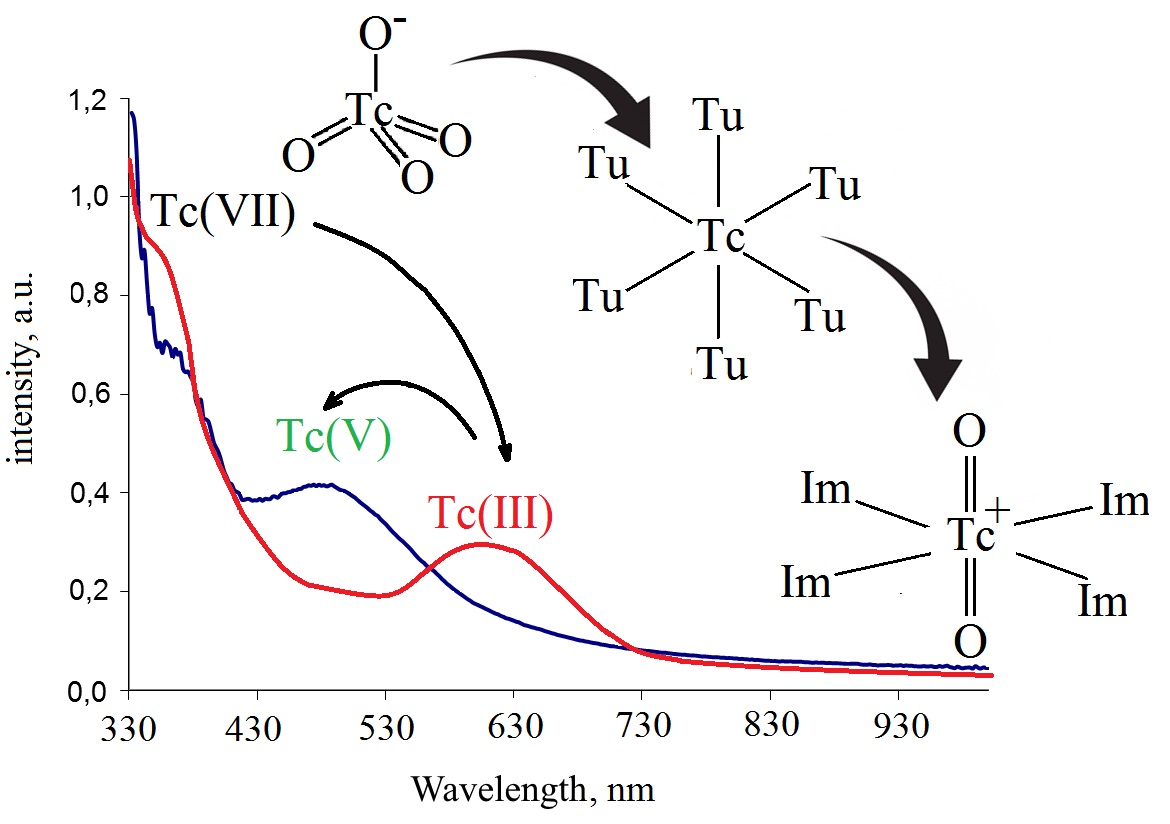In this work, we have proposed two new methods for the synthesis of [TcO2L4]+ (where L = im-idazole (Im), methylimidazole (MeIm)) complexes using thiourea (Tu) and Sn(II) as reducing agents. The main and by-products of the reactions were determined, and possible reaction mechanisms were proposed. We have shown that the reduction of Tc(VII) with thiourea is ac-companied by the formation of the Tc(III) intermediate and further oxidation to Tc(V). The reac-tion conditions changing can lead to the formation of Tc(VII) and Tc(IV) salts. Seven new crystal structures are described in this work: Tc(V) complexes, salts with Tc(VII) and Tc(IV) anions. For halide salts of Tu the cell parameters were determined. In all obtained compounds, except for [TcO2(MeIm)4]TcO4, there are π-stacking interactions between aromatic rings. An increase in the anion size lead to weaken intermolecular interactions. Halogen bonds and anion-π interactions have also been found in hexahalide-containing compounds. The Hirshfeld surface analysis showed that the main contribution to the crystal packing is made by van der Waals interactions of the H···H type (42.5–55.1%), H···C/C ···H (17.7–21.3%) and hydrogen bonds, which contribute 15.7–25.3% in total.

